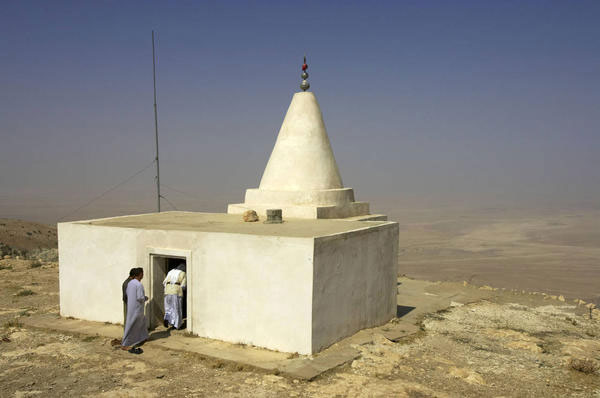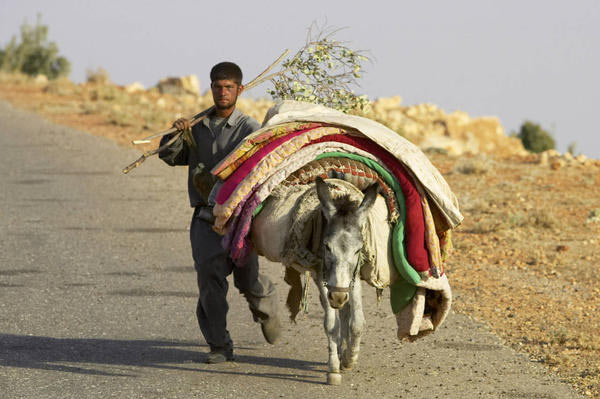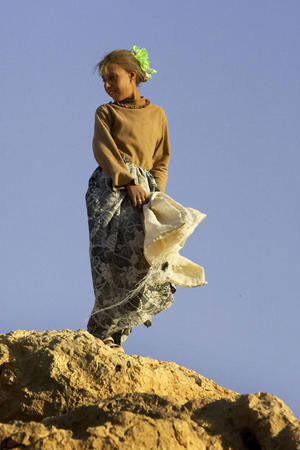
|
||||||||
|
| ||||||||
Who and What are the Yezidis?
By William Hamblin and Daniel PetersonThe religious landscape of the Middle East is much more complex than many outsiders realize. Along with Judaism, Christianity and, in most areas, overwhelmingly dominant Islam, there are numerous small minorities. The Yezidis are one of them. It’s often assumed that the rise of Christianity and Islam led to the end of ancient Middle Eastern paganism. And to a large extent, this is certainly true. There have been no functioning temples to Amon-Re, Baal, Jupiter or Marduk for nearly 1,500 years. Yet, in the Middle East today, nearly a million Yezidis continue to worship according to their pre-Islamic traditions. And yet, when the Yezidis recently appeared in the news as the latest victims of the fanatical jihadist movement known as ISIS — the Islamic State of Iraq and Syria — most Americans were rather puzzled to hear of yet another strange Middle Eastern group. The Yezidis are primarily ethnic Kurds — Kurdish being an Indo-European language related to Persian. But whereas most of the world’s 30 million Kurds are Sunni Muslims, the Yezidis follow a syncretistic non-Islamic religion known as Yazdanism, which they believe is the ancestral religion of the Kurds from before the Arab conquests in the seventh century. The name derives from “yazdan,” meaning “divinity” or “god.” “Yezidi” thus means “a follower of Yazdan/God,” or perhaps simply “theist.” The origins of Yazdanism are obscure. Elements of their beliefs seem to relate to Persian Zoroastrianism, as well as to ancient Mesopotamian paganism, both syncretized to (merged with or influenced by) later Muslim beliefs. Although written texts occasionally mention Yezidis, their own history and teachings have largely been preserved only orally and transmitted mainly to believers. Yezidis believe that God is a transcendent being who manifests himself through the creation of the “Seven Mysteries/Angels.” These archangelic or divine beings are probably a version of the Zoroastrian doctrine of the seven Immortals. The most important of these archangels is the “Peacock Angel/King” (Tawsi Melek), the cosmic ruler and mediator who intervenes on behalf of mankind. (The peacock as an angelic symbol is also found in both Christianity and Islam.) This Great Angel has been equated by some Muslims with Iblis/Satan in the Quran, leading many Muslims to wrongly call Yezidis “devil worshippers.” (Such a description probably doesn’t help them much in the eyes of the Islamic State.)
These archangels have become incarnate through the ages as great cosmic teachers known as “babas” or “gates.” Jesus and Ali — the founder of Shi’ism — are considered two of these “gates.” Yezidi teachings were most strongly influenced by the Muslim mystical or Sufi master Adi ibn Musafir (died 1162), who taught in Kurdistan and was believed by the Yezidis to be an incarnation of the great Peacock Angel. Known to the Yezidis as “Shaykh Adi” or “Master Adi,” he is their greatest saint, whose Sufi or Islamic mystical doctrines were syncretized with earlier Yezidi lore. His teachings are considered scripture by Yezidis. (In Yezidi tradition, he plays much the same role that Joseph Smith plays for Mormons.) Master Adi’s tomb at Lalish, north of Mosul in northern Iraq, is the most important Yezidi pilgrimage center. There, in late March, near the spring equinox (and near Passover/Easter time), they offer sacrifices of sheep in imitation of Abraham’s near-sacrifice of Ishmael (rather than Isaac); sheep’s blood is believed to atone for their sins. In early October, near the autumn equinox and the Jewish New Year, they offer a bull sacrifice. In preparation for their festivals, they perform ritual immersions and washings, and dress in white clothing. Their festivals generally include processions, music and dancing. The exact number of Yezidis today is unknown. Perhaps 600,000 live in northern Iraq, and 50,000 in Syria. Unfortunately, though, this places them at the exact epicenter of the ISIS movement, which isn’t precisely noted for its tolerance of different religious views. However, recent political anarchy in the Middle East, together with the perception of greater economic opportunity elsewhere, has caused 100,000 to migrate to Germany and 40,000 to Russia, with smaller communities emerging in other European countries. As with other ethnic groups in the Middle East — including Mandaeans, the Druze, Palestinians, Christians and Jews — the 20th and 21st centuries have been times of chaos and persecution, causing many from these beleaguered minorities to seek safety and a better life in Europe and America. More information on the Yezidis can be found in their recently developing Web presence at yezidisinternational.org and yeziditruth.org. These sites also solicit donations for the human tragedy of Yezidi refugees and victims of persecution. And Birgul Acikyildiz has recently published a scholarly book titled “The Yezidis: The History of a Community, Culture and Religion” (I.B. Tauris, 2014). Courtesy: The Deseret News of June 26 2015 Daniel Peterson founded BYU's Middle Eastern Texts Initiative, chairs The Interpreter Foundation and blogs on Patheos. William Hamblin is the author of several books on premodern history. They speak only for themselves.
|


